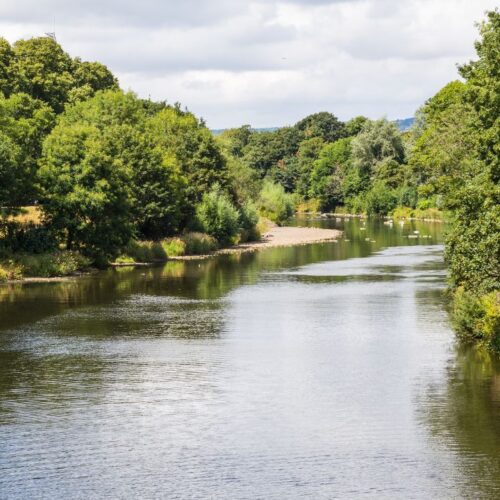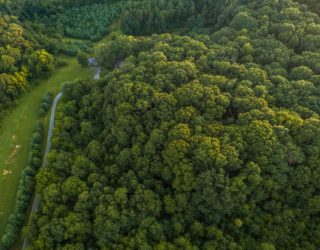Phyllodocidae is a family of polychaete worms commonly known as “paddle worms”. They get this name due to one of their main features, their dorsal cirri, which are large and flattened, giving them a paddle-like appearance. As well as their flattened dorsal cirri, Phyllodocids have other defining characteristics which make them distinctive. This includes their tentacular cirri on the first few segments, which are often elongated (a key feature for identification), and an eversible proboscis with no jaws (an elongated sucking mouthpart that can be turned outwards) (1,2). Many live Phyllodocids have striking colour patterns, which some can maintain even once they have been preserved in our samples. However, they often discolour to a certain extent, meaning that this feature cannot be used for identification. Phyllodocids are common in several types of sediment from shallow waters to the deep sea; however, the overall distribution of each species of Phyllodocid is unknown (2).

Eulalia viridis is a species of Phyllodocid which can be found on intertidal rocky shores, particularly within mussel beds and small spaces in the rocks (3). This species preys on larger invertebrates, such as barnacles and mussels. The most interesting part of the Phyllodocids feeding method is that because they do not have jaws, they must depend on their very strong proboscis to feed (4). In E. viridis, the proboscis has papillae (small rounded protuberences) which are revealed when it is everted. These papillae discharge mucus and toxins when it meets its prey. These ‘phyllotoxins’ debilitate the prey, allowing E. viridis to withdraw bits of flesh (5).

Within the marine team at Thomson, we commonly find specimens of Phyllodoce mucosa (Figure 3) in our samples from around the UK. I particularly like to see the genus Phyllodoce in the samples I analyse. I think they have quite a striking appearance, with their dark eyes and tentacular cirri. I also like that they retain most of their colour, which makes them stand out from the other polychaetes we find in our samples. What I find most interesting about P. mucosa is the way they move; this species produces and discharges mucus while moving to increase its crawling speed. Often, other members of the same species then use the same path, which creates ‘roads’ to food. It is also thought that P. mucosa uses the mucus that it has produced for protection from predators (6).

About the author:
My name is Lauren and I am an Assistant Biologist at Thomson Environmental Consultants, where I have worked for 2 years. I joined Thomson’s marine team after graduating from my degree in Marine Biology at Heriot Watt University. The focus of my role is the processing of benthic macrofaunal samples, from the initial sieving in our wet lab to the extraction of fauna at the microscope. I am currently developing my species level identification skills, using ID keys to look at specific characteristics. I really enjoy this part of my job, especially when I see a species which I haven’t come across yet! I also do particle size analysis. This involves sieving and weighing of samples, then using laser analysis to determine the size range of particles in the sediment. This is a challenging but rewarding part of my job, particularly when putting together the finished report.
Outside of the lab, I am part of the marine survey team. I love the opportunity to get outside and collect the samples we need to analyse. I have taken part in intertidal, walkover and subtidal surveys. Assisting on surveys is certainly hard and muddy work, but it is very exciting to be able to see a project from the starting point to the end.
References
1. Pleijel. F (1993). Polychaeta Phyllodocidae. Marine Invertebrates of Scandinavia, 8: 1-110.
2. Eklof. J., Pleijel. F., Sunberg. P. (2007) Phylogeny of benthic Phyllodocidae (Polychaeta) based on morphological and molecular data. Molecular Phylogenetics and Evolution, 45:261-271. Doi: https://www.sciencedirect.com/science/article/abs/pii/S1055790307001352#preview-section-abstract.
3. Olive P. (1975). Reproductive biology of Eulalia viridis (Müller) (Polychaeta: Phyllodocidae) in the north-eastern U.K. Journal of the Marine Biological Association of the United Kingdom, 55:313-326. Doi: https://www.cambridge.org/core/journals/journal-of-the-marine-biological-association-of-the-united-kingdom/article/abs/reproductive-biology-of-eulalia-viridis-muller-polychaeta-phyllodocidae-in-the-north-eastern-uk/52F92E1D9C27538DA7EF595B23D1ED94
4. Rodrigo AP., Martins C., Costa MH., Alves de Matos AP., Costa PM. (2018) A morphoanatomical approach to the adaptive features of the epidermis and proboscis of a marine Polychaeta: Eulalia viridis (Phyllodocida: Phyllodocidae). Journal of Anatomy, 233:567-579. Doi: https://www.ncbi.nlm.nih.gov/pmc/articles/PMC6182992/
5. Ask Nature (2016). Mucus Enhances Mobility: Biological Strategy. https://asknature.org/strategy/mucus-enhances-mobility/. Accessed [23/02/27].
Photographic credits
Figure 1: McIntosh, W. C. (1908). A monograph of British Annelids. Ray Society of London, II. Part I. Polychaeta. Nephthydidae to Syllidae. 2: 1-232.
Figure 2: Dieter Fiege, Senckenberg Naturmuseum Frankfurt, Germany.
Figure 3: Dieter Fiege, Senckenberg Naturmuseum Frankfurt, Germany.











